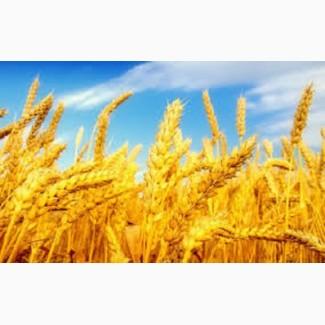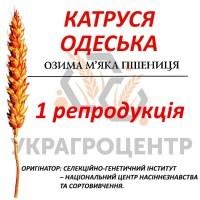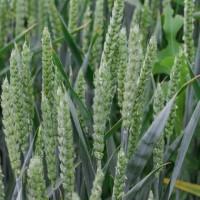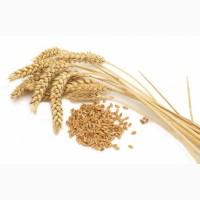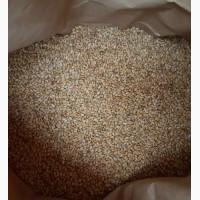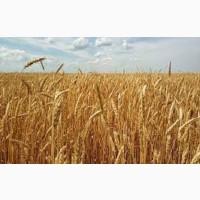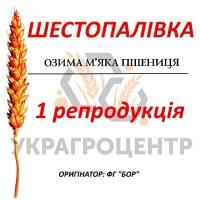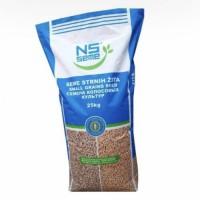For sale / buy
Winter wheat seeds ROZKISHNA, Kharkiv region.
Price11 000 UAH. / ton
Region:all of Ukraine,
Kharkiv region.
Updated:
Grain destination: Seed material
Quantity: 200 tons| ||147
LUXURIOUS WHEAT
The year of entry into the Register of Plant Varieties of Ukraine is 2009, recommended for cultivation in the forest-steppe zone of Ukraine.
Test marks: variety of erythrospermum. A stem with a weak wax coating on the upper internode. The ear is cylindrical in shape, of medium length (9-10 cm) and density (21-22 segments per 10 cm of stem length). The shoulder of the spikelet scale is narrow, bevelled.Red grain, medium length and width. Weight of 1000 grains 41.0 g.(//tractor-service.com)
Biological features: mid-ripe variety. Ripens at the same time as the Podolyanka standard, medium-sized (plant height 95-100 cm), resistant to lodging. Winter resistance at the level of the best standards of Donetskaya 48 and Zhemchuzhina Lesostepa. In field conditions, it is tolerant to the main harmful diseases.
Economic characteristics: high-yielding court, universal type. Potential yield of 12.0 t/ha. In the unfavorable conditions of 2006 and 2007, in the competitive variety test of IP named after V. Ya. Yuryev's yield was 7.7-7.9 t/ha, in the 2008 competitive variety test — 9.45 t/ha, which is 0.38 t/ha higher than the Podolyanka standard. The average yield at the Lesostepa sorting stations is 6.7 t/ha, the maximum is 8.7 t/ha. In 2012, the yield was 11.6 t/ha at the technological testing ground of the North-East Agricultural Institute of the National Academy of Sciences.Grain quality excellent. According to the data of the grain quality laboratory of the Plant Varieties Expertise Institute, the protein content is 15.7%, the gluten content is 33.0, the strength of the flour is 370 a.a., the volume of bread from 100 g of flour is 600 ml.
Agrotechnical requirements: universal type of court, undemanding to growing conditions. It is suitable for cultivation after various predecessors, the best are busy couples, perennial grasses, corn for silage using conventional and intensive technology, but the maximum yield of Roskoshnaya is formed when using intensive technology and optimal doses of mineral fertilizers. It is necessary to protect plants from diseases and pests.Seeds before sowing, it is necessary to treat them with a fungicide mixed with an insecticide. Sowing times are optimal for winter wheat. The seed sowing rate is 4.5 million germinated seeds per 1 ha after pairing and 5.0 million after non-pairing predecessors.
The year of entry into the Register of Plant Varieties of Ukraine is 2009, recommended for cultivation in the forest-steppe zone of Ukraine.
Test marks: variety of erythrospermum. A stem with a weak wax coating on the upper internode. The ear is cylindrical in shape, of medium length (9-10 cm) and density (21-22 segments per 10 cm of stem length). The shoulder of the spikelet scale is narrow, bevelled.Red grain, medium length and width. Weight of 1000 grains 41.0 g.(//tractor-service.com)
Biological features: mid-ripe variety. Ripens at the same time as the Podolyanka standard, medium-sized (plant height 95-100 cm), resistant to lodging. Winter resistance at the level of the best standards of Donetskaya 48 and Zhemchuzhina Lesostepa. In field conditions, it is tolerant to the main harmful diseases.
Economic characteristics: high-yielding court, universal type. Potential yield of 12.0 t/ha. In the unfavorable conditions of 2006 and 2007, in the competitive variety test of IP named after V. Ya. Yuryev's yield was 7.7-7.9 t/ha, in the 2008 competitive variety test — 9.45 t/ha, which is 0.38 t/ha higher than the Podolyanka standard. The average yield at the Lesostepa sorting stations is 6.7 t/ha, the maximum is 8.7 t/ha. In 2012, the yield was 11.6 t/ha at the technological testing ground of the North-East Agricultural Institute of the National Academy of Sciences.Grain quality excellent. According to the data of the grain quality laboratory of the Plant Varieties Expertise Institute, the protein content is 15.7%, the gluten content is 33.0, the strength of the flour is 370 a.a., the volume of bread from 100 g of flour is 600 ml.
Agrotechnical requirements: universal type of court, undemanding to growing conditions. It is suitable for cultivation after various predecessors, the best are busy couples, perennial grasses, corn for silage using conventional and intensive technology, but the maximum yield of Roskoshnaya is formed when using intensive technology and optimal doses of mineral fertilizers. It is necessary to protect plants from diseases and pests.Seeds before sowing, it is necessary to treat them with a fungicide mixed with an insecticide. Sowing times are optimal for winter wheat. The seed sowing rate is 4.5 million germinated seeds per 1 ha after pairing and 5.0 million after non-pairing predecessors.
|
Author, contacts | |
Ltd. Haskom Trade / otzyvy, info. / estimation of activity | |
|
Phone:|| |189
+38(xxxxxx
show
| |
| http://www.khaskom.com.ua | |
All user ads ~603 | |
ID объявления: #936613
(added by a registered user, registration date: 12-28-2016)
Added/Updated: 09-30-2024 08:52 (current, until: 30-09-2025)
Permanent ad address:
Showed / watched for today: ?, total: ?
Similar ads
Among them there are many interesting...
